Newsweek: Fungal Condition Often Mistaken for Something Common
Published Mar 28, 2024 at 2:19 PM EDT
By Beauty and Self Care Reporter
read full article at: Newsweek

Flaky skin is a tough issue to tackle, having a potentially huge impact on self-confidence and mental health, as well as being uncomfortable and sometimes downright itchy.
It's easy to jump to the conclusion that it is just dry skin and begin layering on products full of moisturizing ingredients such as hyaluronic acid and vitamin E—but you could be wasting your products and time.
Dermatologist Mark Strom shared a video on his TikTok page, @dermarkologist, to highlight how that "flaky skin" could in fact be a fungal condition.
In the video Strom explains: "Many people with this chronic condition just think that they have really dry and flaky skin around the nose, eyebrows, behind the ears and sometimes in the ear area, especially in the winter when it tends to get worse. But they actually have a skin condition called seborrheic dermatitis."
Dermatologist Mark Strom shared a video on his TikTok page, @dermarkologist, to highlight how that "flaky skin" could in fact be a fungal condition.
In the video Strom explains: "Many people with this chronic condition just think that they have really dry and flaky skin around the nose, eyebrows, behind the ears and sometimes in the ear area, especially in the winter when it tends to get worse. But they actually have a skin condition called seborrheic dermatitis."
To better understand the condition, Newsweek spoke to Alexis Pfropper, founder of ästhetik skincare in Punta Gorda, Florida, who explained: "It is a common skin condition that causes redness, scaly patches, and dandruff, usually on the scalp but can also affect other oily areas like the face and chest. It's believed to be related to an overgrowth of yeast on the skin, combined with an overproduction of oil."
In the viral video, which has gained more than 59 million views since February 18, Strom recommends treatment options to get the condition under control, saying: "Anti-fungal treatments aimed at reducing yeast on the skin are my first line of treatment... Other treatments aimed at reducing inflammation on the skin can additionally help – those are things like topical steroids and non-steroidal creams."
Pfropper agrees, suggesting: "Over-the-counter anti-fungal creams or shampoos containing ingredients like ketoconazole, selenium sulfide, or zinc pyrithione can help reduce yeast overgrowth and inflammation."
When it comes to products you already have at home, Pfropper says that gentle pH-balanced cleansers and light exfoliation can do the trick, but she warns to avoid harsh products that can further irritate the skin.
"Moisturizing regularly can help soothe and hydrate the skin, reducing flakiness and discomfort. Look for moisturizers that are non-comedogenic and suitable for sensitive skin," she added. "Regular exfoliation can help remove dead skin cells and reduce flakiness. However, be cautious not to over-exfoliate, as this can worsen irritation. Opt for gentle exfoliants like salicylic acid or glycolic acid."
If you feel like the issue isn't going away, it could be time to turn to a professional to get your condition evaluated and see if prescription-strength treatments may be appropriate, Pfropper added. "Everyone's skin is unique, so it's essential to find the right combination of treatments that work for you."

